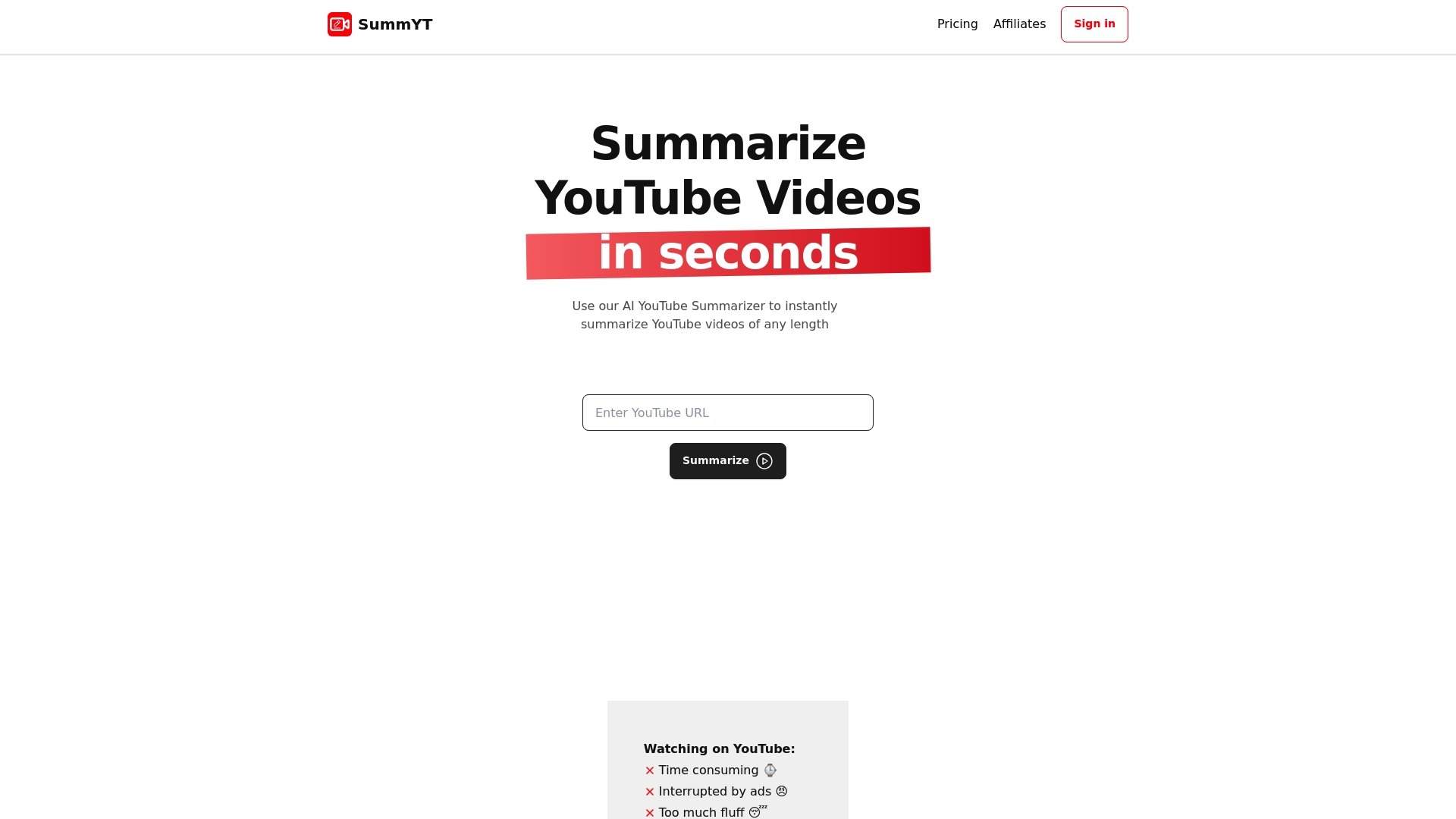7 Effective Ways to Summarize Lectures for Better Retention

Summarizing lectures might seem straightforward and many students think jotting down every word will help them remember more. Yet, studies show that students who focus on summarizing key concepts retain and apply knowledge far more effectively than those who just write everything down. The real secret is not in frantic note-taking but in building mental shortcuts and personal understanding—skills that can completely change the way you learn.
Table of Contents
- Understand The Main Ideas Clearly
- Use Note-Taking Techniques
- Create Visual Aids For Summarization
- Practice Paraphrasing Key Points
- Develop A Structured Outline
- Share Summaries With Peers For Feedback
- Regularly Review And Revise Your Summaries
Quick Summary
| Takeaway | Explanation |
|---|---|
| Focus on core concepts | Actively listen for main ideas and themes. This promotes better understanding and retention of lecture material. |
| Implement effective note-taking | Use structured methods like the Cornell Method or concept maps to organize and retain information efficiently. |
| Create visual aids | Transform information into diagrams or infographics to improve comprehension and recall of complex ideas. |
| Practice paraphrasing | Rewrite lecture content in your own words. This helps consolidate understanding and reveals gaps in knowledge. |
| Regularly review summaries | Schedule consistent review sessions to reinforce learning and adapt summaries as your understanding evolves. |
1: Understand the Main Ideas Clearly
Successful lecture summarization begins with a fundamental skill: extracting core concepts and understanding the main ideas. Students often struggle with information overload, making it crucial to develop a strategic approach to comprehending lectures efficiently.
Lectures are complex information streams where professors communicate intricate knowledge through verbal and visual explanations. Identifying the primary concepts requires active listening and strategic mental processing. Medical Education Review research highlights that students who focus on summarizing core principles demonstrate superior knowledge retention and application.
To understand main ideas clearly, consider these strategic techniques:
- Listen for recurring themes and repeated phrases
- Pay attention to introductory and concluding statements
- Observe visual cues like slide headers or emphasized text
- Track the lecturer’s tone and verbal emphasis
Effective comprehension involves more than passive hearing. Engage with the lecture content by mentally connecting new information to existing knowledge. This approach transforms learning from a passive to an active process, helping you internalize complex ideas more rapidly.
During the lecture, create mental markers that signal important concepts. These markers could be specific terminology, statistical data, or conceptual frameworks that the instructor repeatedly references. By recognizing these signposts, you can quickly distinguish between supplementary details and core principles.
The goal is not to transcribe every word but to construct a mental map of the lecture’s primary arguments and insights. Develop a flexible listening strategy that allows you to capture essential ideas while remaining adaptable to the lecture’s evolving narrative.
2: Use Note-Taking Techniques
Mastering effective note-taking transforms lectures from passive listening experiences into active learning opportunities. Structured note-taking techniques help students capture critical information efficiently and enhance overall comprehension.
Research in the journal Cureus demonstrates that strategic note-taking methods significantly improve lecture material retention compared to passive listening approaches.
Consider implementing these powerful note-taking strategies:
- Use the Cornell Method for systematic organization
- Create concept maps to visualize complex relationships
- Develop shorthand symbols for faster writing
- Leave space for additional annotations and reflections
Digital and analog note-taking each offer unique advantages. Traditional handwritten notes engage deeper cognitive processing, while digital tools provide searchability and easy editing. Some students find success by combining both methods, using digital platforms to refine and expand handwritten initial notes.
The most effective note-taking technique depends on individual learning preferences and lecture complexity. Experiment with different approaches to discover what works best for your learning style. Some students prefer linear outlines, while others thrive with mind mapping or sketch noting.
Focus on capturing key concepts rather than transcribing every word. Actively listen and quickly identify core ideas, using abbreviations and symbols to maintain pace with the lecturer. Develop a personal shorthand system that allows rapid recording without losing critical information.
Remember that good notes serve as a future study resource. Structure your notes to be clear, concise, and easily reviewable. Use headings, numbered lists, and visual hierarchies to create a logical flow that makes sense when you return to them later.
3: Create Visual Aids for Summarization
Visual aids transform complex lecture information into digestible, memorable formats. By converting verbal and textual content into graphical representations, students can enhance understanding and retention of critical concepts.
Research on lecture video summarization highlights the power of visual techniques in capturing and representing key lecture information. Visual summarization helps learners quickly grasp complex ideas by providing alternative cognitive pathways for processing information.
Effective visual summarization strategies include:
- Mind mapping to show conceptual connections
- Flowcharts for sequential processes
- Diagrams illustrating complex systems
- Infographics to condense dense information
Color coding and strategic visual organization can dramatically improve information processing. Use different colors to categorize concepts, highlight critical points, and create visual hierarchies that guide the eye through complex information.
Diagrams work exceptionally well for technical and scientific lectures. Break down complicated systems into clear, interconnected components. Sketch relationships between ideas, showing how different concepts link and interact.
Technology offers powerful tools for visual summarization. Digital platforms allow students to create dynamic, interactive visual summaries that can be easily modified and shared. Learn more about outlining video reports to enhance your visual summarization skills.
Remember that visual aids are not just decorative elements. They are cognitive tools that help translate complex verbal information into intuitive, memorable formats. Practice creating visual summaries that are clear, concise, and genuinely illuminate the lecture’s core concepts.
4: Practice Paraphrasing Key Points
Paraphrasing transforms complex lecture content into personally understood language, helping students internalize information more effectively. This skill goes beyond simple repetition, requiring deep comprehension and creative interpretation of core concepts.
When you paraphrase, you translate the lecturer’s technical language into your own words, which signals true understanding. This cognitive process forces your brain to process information actively, rather than passively recording verbatim notes.
Key strategies for effective paraphrasing include:
- Use simpler vocabulary than the original lecture
- Maintain the original meaning and intent
- Change sentence structure while preserving core ideas
- Check understanding by comparing to original content
Successful paraphrasing requires careful listening and intellectual engagement. Avoid simply swapping out individual words with synonyms. Instead, restructure entire ideas while preserving their fundamental meaning.
Practice paraphrasing immediately after hearing a concept. Write down your interpretation without looking at original notes. This approach helps solidify understanding and reveals potential gaps in comprehension.
Some learners find it helpful to explain complex ideas as if teaching someone else. This technique, known as the protégé effect, enhances learning by requiring clear, accessible language translation.
Learn more about different content summary techniques to complement your paraphrasing skills. Combining multiple summarization approaches can dramatically improve information retention and comprehension.
5: Develop a Structured Outline
Structured outlines transform complex lecture information into organized, digestible frameworks. By creating a systematic representation of content, students can navigate intricate concepts with greater clarity and comprehension.
Research on note-taking strategies demonstrates that hierarchical organization helps learners distinguish between primary concepts and supporting details.
Key principles for developing an effective lecture outline include:
- Use Roman numerals for main topics
- Indent supporting points consistently
- Create logical connections between ideas
- Leave space for additional annotations
Hierarchical organization is crucial for understanding lecture content. Begin with broad categories and progressively break them down into specific sub-points. This approach helps create a mental map of the lecture’s conceptual landscape.
Digital tools can enhance outline creation, offering flexibility and easy modification. Utilize software that allows real-time editing and supports multiple formatting options. Some students prefer traditional handwritten outlines, while others find digital platforms more convenient.
Explore different content summary techniques to complement your outlining strategy. Combining multiple approaches can significantly improve information retention and comprehension.
Remember that a good outline is not just a transcription but an interpretative tool that reveals the underlying structure of lecture material. Practice creating outlines that are clear, concise, and genuinely illuminate the lecture’s core concepts.
6: Share Summaries with Peers for Feedback
Collaborative learning transforms individual lecture summaries into powerful collective knowledge. By sharing and comparing summaries with peers, students gain multiple perspectives and uncover potential gaps in their understanding.
Research from Cornell University demonstrates that peer feedback processes significantly enhance critical analysis skills and learning outcomes.
Key strategies for effective peer summary sharing include:
- Create a supportive, non-judgmental feedback environment
- Provide specific, constructive observations
- Ask clarifying questions about unclear points
- Be open to receiving feedback from others
Peer review is not about criticism but collaborative learning. When students exchange summaries, they expose themselves to different interpretation strategies and cognitive approaches. This process helps identify blind spots and reinforces learning through diverse perspectives.
Establish clear guidelines for feedback exchanges. Encourage peers to focus on content accuracy, clarity of explanation, and comprehensiveness of the summary. Rotate summary review partners to gain insights from multiple classmates.
Discover why summarizing educational content matters to further enhance your collaborative learning approach. Understanding the broader context can improve your summary creation and review skills.
Remember that effective peer feedback is a two-way street. Be as thoughtful and detailed when providing feedback as you would want others to be when reviewing your work. This mutual respect creates a positive, growth-oriented learning environment.
7: Regularly Review and Revise Your Summaries
Consistent review transforms lecture summaries from static documents into dynamic learning tools. Regular revision helps solidify understanding, identify knowledge gaps, and reinforce critical concepts learned during lectures.
Medical research confirms that spaced repetition and periodic review significantly enhance long-term retention and memory consolidation. This scientific approach turns summarization into a strategic learning process.
Essential strategies for effective summary review include:
- Schedule dedicated review times weekly
- Compare current understanding with original summaries
- Update summaries with new insights or context
- Use color coding to highlight evolving knowledge
Treating summaries as living documents allows for continuous learning. Each review session becomes an opportunity to deepen comprehension, connecting new information with previously recorded insights.
Digital tools can streamline the review process. Use apps or platforms that enable easy editing and tracking of summary modifications. Some students find value in creating version histories, allowing them to track their evolving understanding.
Learn how to create engaging educational video summaries to complement your review strategy. Understanding effective summarization techniques can transform your learning approach.
Remember that reviewing is not about memorization but understanding. Approach each review session with curiosity, seeking to understand underlying principles and connections between concepts.
Below is a comprehensive table summarizing the seven effective ways to summarize lectures for better retention, including key strategies and benefits for each method discussed in the article.
| Strategy | Description | Benefit |
|---|---|---|
| Understand Main Ideas | Identify recurring themes, key concepts, and lecturer emphasis during the lecture. | Facilitates active listening and deep comprehension. |
| Use Note-Taking Techniques | Apply methods like the Cornell Method, concept maps, and personal shorthand. | Enhances information organization and later recall. |
| Create Visual Aids | Convert information into diagrams, mind maps, or infographics. | Improves clarity, aids memory, and simplifies concepts. |
| Practice Paraphrasing | Rephrase lecture material into your own words immediately after learning. | Promotes active engagement and reveals knowledge gaps. |
| Develop a Structured Outline | Create systematic outlines using hierarchies and logical flow. | Makes reviewing and understanding complex content easier. |
| Share Summaries with Peers | Exchange summaries for collaborative review and feedback. | Uncovers blind spots and brings new perspectives. |
| Regularly Review and Revise Summaries | Update and revisit summaries through spaced repetition. | Reinforces learning and tracks evolving understanding. |
Struggling to Capture Key Lecture Insights? Unlock Effortless Summaries with AI
Keeping up with complex lectures and turning hours of spoken information into simple, usable notes is a real challenge. The article you just read outlines how hard it can be to extract the main ideas, create effective summaries, and make your study sessions more productive. If you’re tired of missing important points or spending endless time restructuring your notes, there’s a better way to boost your retention and stay ahead.

Experience how SummYT, the intelligent YouTube summarizer, transforms educational videos and lectures into crystal-clear summaries in minutes. Apply proven techniques like structured outlining and visual aids without extra effort.
Start today at SummYT and gain instant access to unlimited summaries, quick comprehension, and a faster path to better learning. Don’t let another lecture slip by—get more from every video now.
Want more ways to summarize smarter? Explore our guide: How to Create Engaging Educational Video Summaries.
Frequently Asked Questions
What are some effective techniques for summarizing lectures?
To effectively summarize lectures, you can: 1) Clearly understand main ideas, 2) Use structured note-taking techniques, 3) Create visual aids, 4) Practice paraphrasing, 5) Develop a structured outline, 6) Share summaries for peer feedback, and 7) Regularly review and revise your summaries.
How can I improve my note-taking during lectures?
To enhance your note-taking, consider using methods like the Cornell Method for organization, concept maps for visual representation, and shorthand symbols for faster writing. Focus on capturing key concepts rather than transcribing every word.
What role do visual aids play in summarizing lecture content?
Visual aids help transform complex lecture information into digestible formats, making them easier to retain. Techniques like mind mapping, flowcharts, and diagrams can enhance understanding by providing alternative ways to process information.
Why is paraphrasing important when summarizing lectures?
Paraphrasing is essential because it forces you to actively process information and express it in your own words. This deepens understanding and helps you maintain the original meaning while making the content more memorable.



